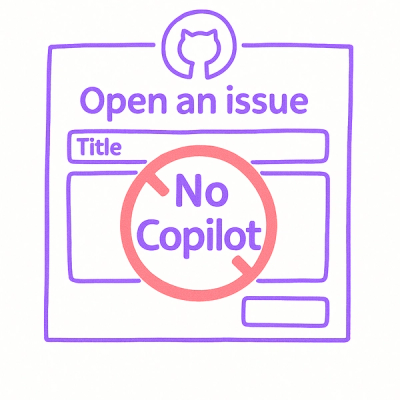
Security News
Open Source Maintainers Demand Ability to Block Copilot-Generated Issues and PRs
Open source maintainers are urging GitHub to let them block Copilot from submitting AI-generated issues and pull requests to their repositories.
Lightweight, docker-capable virtual testing environment based on docker-in-docker (dind)
Lightweight, docker-capable virtual testing environment.
DindBox creates virtual testing environments, each comprising two docker containers. These function like lightweight virtual machines, allowing for the creation and operation of docker containers within them without affecting the host system's main docker daemon. This "docker-in-docker" principle, used by CI platforms like GitLab CI or GitHub Actions, enables docker capability within a containerized runner. DindBox offers this setup for local testing and prototyping, and can also be used in a CI context with a dedicated runner.
Dindbox only runs on Linux-based systems. It requires a Python version >= 3.10, a running docker server, and an installation of the Docker CLI.
Dindbox is mostly intended to be used as a command-line tool. For this use case, it is recommended to install it via pipx in order to make it available globally but keep its dependencies within a separated environment:
python3 -m pip install --user pipx
python3 -m pipx ensurepath
pipx install dindbox
If you however do plan to use dindbox as a python library (see below), simply run pip install dindbox within the
virtual environment of your project.
All commands and options are documented in detail in the command-line help. Run dindbox -h for a list of available
commands, and dindbox COMMAND -h for help on each command.
The most basic use case is to directly start an interactive session:
dindbox my_box run
Where my_box is the name of your dindbox which you can re-use in further commands to interact with it. The run
command without further parameters will give you an Alpine Linux based environment, with a fully functional docker
client & daemon - encapsulated within docker containers themselves (docker-in-docker). The container containing the
docker daemon is referred to as service container. The container with which you're interacting, which contains the
docker client is referred to as build container.
If you are on an ubuntu-based system, run will also open a status screen in a separate console window. You may close
this status screen at any time, it is only for monitoring purposes. Also, you can reopen it at any time running
dindbox my_box status from a separate shell window.
If you'd rather use an ubuntu image, do something like the following to change the default build container image:
dindbox my_box run -i ubuntu:focal
Note that in this case you will need to manually install the docker client, since it is not part of the ubuntu
image. The docker daemon however, will already be available, since it runs inside the service container.
Note that you may also replace the service container's image (using -I). Normally, it should always be a dind
tag of the official docker image, but you can use this to test with different versions of docker, for example.
Nevertheless, other use cases are possible, too, like running a SQL server is in the service image, and the client in
the build image.
When you're done, you should always clean up boxes which you do not need anymore. In order to remove all docker entities
associated with your dindbox, run:
dindbox my_box remove
Or, if you know it is a throw-away box, directly append --rm to the run command for automatic cleanup after exiting.
For further commands, check out the command-line help. Note that run is a shortcut for create + start + attach.
Only in special cases it makes sense to use these commands individually, for the most part you should be fine with
run.
All command-line parameters can also be set through a config file, so you do not have to re-type them every time. Note that config file settings only affect CLI usage. They have no effect at all when using dindbox as a Python library.
Dindbox will look for a config file in three locations:
pyproject.toml file, as is usually present within a poetry environment. Any sections within that file of the format
[tool.dindbox.*] will be considered (see below for exact format).dindbox.conf will be parsed.--config-file or -c command-line argument will be parsed.Config files will be parsed in the order specified above. Duplicate options provided in a later config file will override values from previous config files. Additionally, a command-line parameter will always override a value set in any of the config files.
Config files need to be in the TOML format. Arguments to each dindbox command are specified in a section named
[dindbox.COMMAND], where COMMAND is the name of the command, e.g. run. The section name is case-sensitive.
Additionally, global arguments (the ones provided before a command and listed when running dindbox --help) can be
specified in a section named [dindbox.global].
Argument names must be provided in their long form, without the leading --. Here's an example:
[dindbox.global]
log-level = "DEBUG"
[dindbox.run]
no-status-screen = true
rm = true
[dindbox.remove]
force = true
Note: When setting options in poetry's pyproject.toml, the section name needs to be prefixed with tool.:
[tool.dindbox.run]
rm = true
Althogh dindbox is primarily intended to be used as a command-line tool, it can also be used as a Python library and
you can create your own custom scripts and applications based on it. The main entry point is the DindBox class. Here's
a minimal example of how to use it:
from dindbox import DindBox
box = DindBox("my_box", build_image="ubuntu:focal")
box.run()
For further usage details, rely on the docstrings and type annotations of the DindBox class and its methods.
Although there are probably more, DindBox was created with a particular set of use cases in mind. Most of these are aimed at local testing on your development machine, but there are some rare cases, where it may even make sense to run DindBox on your CI server. (In that case however, you're gonna need a dedicated runner, since DindBox itself should not be run within a container.)
Test installation and execution of dockerized apps in a safe environment and on different Linux distributions
You've created an application which is nicely bundled into microservices. Maybe there's also a nice little install
script to set it all up on a machine. But how do you test it? Hopefully not by running an untested script with root
permissions directly on your development machine. You'll either need a VM, or a tedious manually cobbled-together
docker setup - or you just type dindbox run and give it a go! And by switching out the image for the build container,
you can even easily test if your script runs fine on different Linux distros (and different releases of these).
Test a dockerized application against different versions of docker
Switching the docker version locally means uninstalling and re-installing for each version switch. With DindBox, you
can just swap out the images and re-run your application (or re-build your images) based on a different release of
docker.
Reproduce and debug errors which occur in continuous integration (CI) jobs
CI pipelines can be difficult to debug. And sometimes, the problem is not in the pipeline code alone, but also has to
do with the fact that the job is executed within a containerized runner. This can be particularly tricky, when
running docker commands as part of the pipeline, e.g. to test a self-built image. DindBox allows to easily reproduce
the containerized setup locally, with one simple command-line.
Build docker images locally within a well-defined environment
In CI, your docker images are built in a containerized environment with a fixed docker version etc. DindBox makes it
easy to reproduce the exact same conditions locally.
Anything else you would otherwise use a virtual machine for, because you need it to be isolated, and it requires docker.
Note: the service running in the second container does not have to be dockerd. Since the image is freely configurable, you could also switch it our for a database image like MySQL, and test your DB-dependent, non-dockerized application in a DindBox. That's totally possible, but it is not what I had in mind when I created it.
Good question. For many use cases, docker-compose may be a good solution. But specifically for the testing use cases listed above, DindBox offers some advantages, and also some specific features, which are not easily reproduced with docker-compose:
DindBox uses poetry for dependency management, isolation and packaging.
pip install it.poetry installFAQs
Lightweight, docker-capable virtual testing environment based on docker-in-docker (dind)
We found that dindbox demonstrated a healthy version release cadence and project activity because the last version was released less than a year ago. It has 1 open source maintainer collaborating on the project.
Did you know?

Socket for GitHub automatically highlights issues in each pull request and monitors the health of all your open source dependencies. Discover the contents of your packages and block harmful activity before you install or update your dependencies.

Security News
Open source maintainers are urging GitHub to let them block Copilot from submitting AI-generated issues and pull requests to their repositories.

Research
Security News
Malicious Koishi plugin silently exfiltrates messages with hex strings to a hardcoded QQ account, exposing secrets in chatbots across platforms.

Research
Security News
Malicious PyPI checkers validate stolen emails against TikTok and Instagram APIs, enabling targeted account attacks and dark web credential sales.